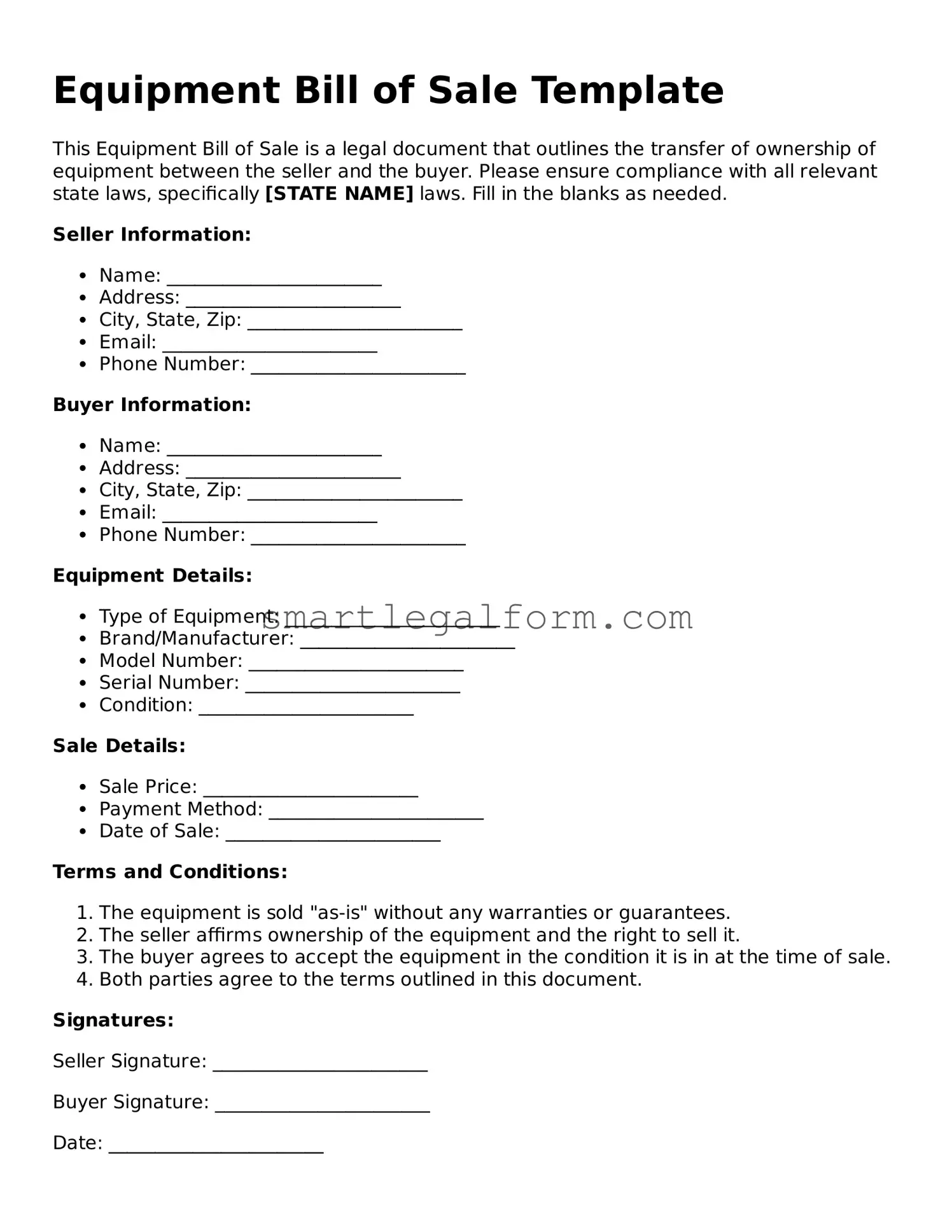Filling out an Equipment Bill of Sale can seem straightforward, but many people make common mistakes that can lead to confusion or even legal issues down the line. Understanding these pitfalls can help ensure that your transaction goes smoothly. Here are nine frequent errors to watch out for.
First, one of the most common mistakes is failing to include all necessary details about the equipment. It's crucial to provide a complete description, including the make, model, year, and any serial numbers. Omitting this information can create ambiguity, making it difficult to identify the equipment later.
Another frequent error is neglecting to include the purchase price. This amount should be clearly stated to avoid any misunderstandings between the buyer and seller. Leaving this blank can lead to disputes about the value of the transaction.
Many individuals also forget to date the Bill of Sale. A date is essential as it establishes when the transaction took place. Without a date, it may be challenging to determine the timeline for warranty claims or other legal matters.
Inaccurate or incomplete signatures can pose a significant problem as well. Both the buyer and seller should sign the document to validate the transaction. If a signature is missing, the Bill of Sale may not hold up in court.
Some people overlook the importance of including contact information. Listing the full names and addresses of both parties helps to ensure that everyone involved can be reached if any issues arise in the future.
Additionally, failing to retain copies of the Bill of Sale can lead to complications. Both the buyer and seller should keep a signed copy for their records. This documentation serves as proof of the transaction and can be useful for tax purposes or in case of disputes.
Another mistake is not checking local laws regarding the sale of equipment. Regulations can vary by state or locality, and understanding these rules is essential to ensure compliance. Ignoring local requirements can lead to legal troubles later on.
Some individuals might also rush through the process, leading to careless errors. Taking the time to review the document thoroughly before submitting it is vital. A quick glance may miss crucial details that could cause problems down the line.
Lastly, misunderstanding the purpose of the Bill of Sale can lead to issues. This document is not just a receipt; it serves as a legal record of the transfer of ownership. Knowing its significance can help ensure that all necessary information is included and accurate.
By being aware of these common mistakes, you can navigate the process of filling out an Equipment Bill of Sale with greater confidence and clarity. Taking the time to double-check your work can save you from potential headaches in the future.
